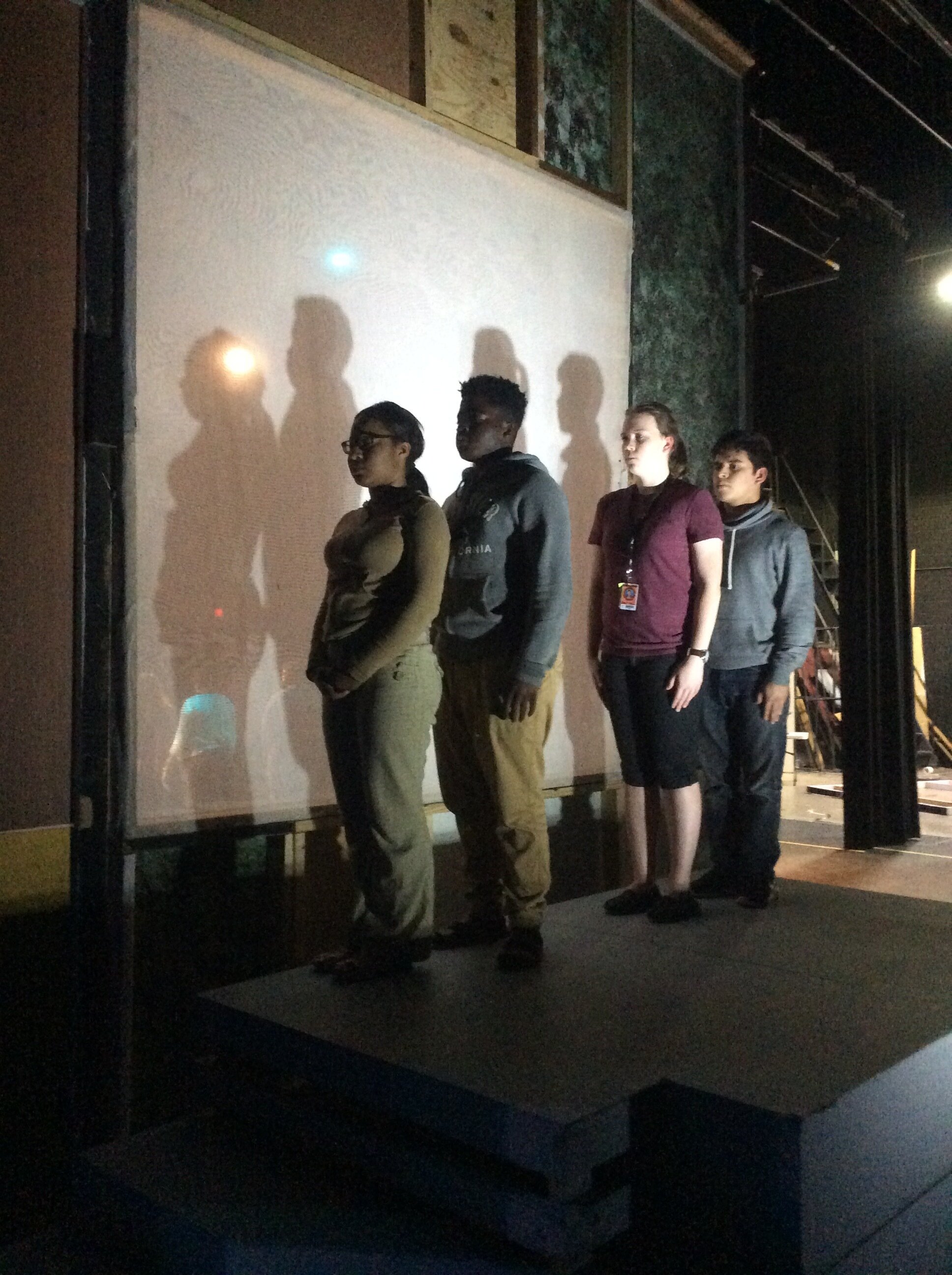Below is my process for conceptualizing, building, and producing George Orwell's classic hit 1984 as a part of North Shore High schools' 2015-2016 season. *All photos and video clips used are from the rehearsal/ build process*
Ideation
While reading this play in 2015, I immediately began envisioning the world it depicted, even if it didn’t entirely align with the descriptions “suggested” in the script. My imagination took me to a hyper-exaggerated futuristic setting with distinct parallels to our modern world. This world was sharp, robotic, and saturated with technology—characters using iPads and iPhones, connecting to social media, tagging, and checking in.
I wanted to explore a version of Oceania where Big Brother wasn’t just watching but actively collecting data and waiting for any misstep. The citizens of Oceania mirrored today’s society, glued to their devices, willingly sharing their locations, activities, and preferences. This constant stream of data empowered industries to create algorithms designed to keep people working, posting, and subscribing. It was a world where control wasn’t just enforced by fear but by subtle, self-imposed digital submission.
When the product is “free”, you are the product. And there is a price.
Concept Presentation
Production
After reading the script, I envisioned a production with a heavy and creative technical focus, where the set itself conveyed the message: “Big Brother is always watching.” To achieve this, I planned to use scrim fabric throughout the set, which could be projected on from the front and backlit to reveal scenes or actors. As the show progressed, the scrim would gradually reveal Big Brother, amplifying the tension as he loomed over the characters, observing and eavesdropping.
This production was undoubtedly a challenge. I aimed for a stationary set with minimal furniture to accommodate shifts between five locations. Instead of relying on elaborate set changes, the focus was on adding actors and creating a strong “presence” on stage to convey the shifting dynamics and oppressive atmosphere.
I effectively achieved this vision using scrim fabric, which seamlessly revealed silhouettes and created the unsettling feeling that conversations and actions were never truly private. This reinforced the central idea that “Big Brother is always watching.” To further emphasize this theme, I used multiple actors to physically and vocally perform the “Two Minutes of Hate” message, crafting a live, genderless, manipulated soundscape. This approach suggested that Big Brother could be a single person, a panel of individuals, or perhaps no one at all—a powerful ambiguity.
Using ArKaos, an incredible projection mapping software, we combined still images and a live video feed streamed directly from the booth to bring the character of Big Brother to life. The telescreen watchtower became the undeniable centerpiece of the production, anchoring the audience’s focus and heightening the tension throughout the show.
Reflection
From the moment the company first met, I prioritized creating a rehearsal environment that fostered a strong sense of ensemble. I never anticipated the incredible mentoring bonds that would form among the cast members. Upperclassmen paved the way for underclassmen, and rehearsals buzzed with an eager, excited energy that sparked creativity and collaboration. This energy became the foundation for a truly pride-filled and successful production, as actors came to rehearsals brimming with ideas and questions, rather than waiting to be blocked into each scene—a director’s dream!
This production was unlike any other previously performed at North Shore. Parents and faculty were genuinely surprised by the depth of the content and the cast’s commitment to telling a story with the power to change perspectives. Seeing my students’ peers and parents view them in a new light created a meaningful bridge between the on-campus and off-campus communities, leaving a lasting impact on everyone involved.
“Don’t expect the theatre to satisfy the habits of its audience, but to change them.”



















